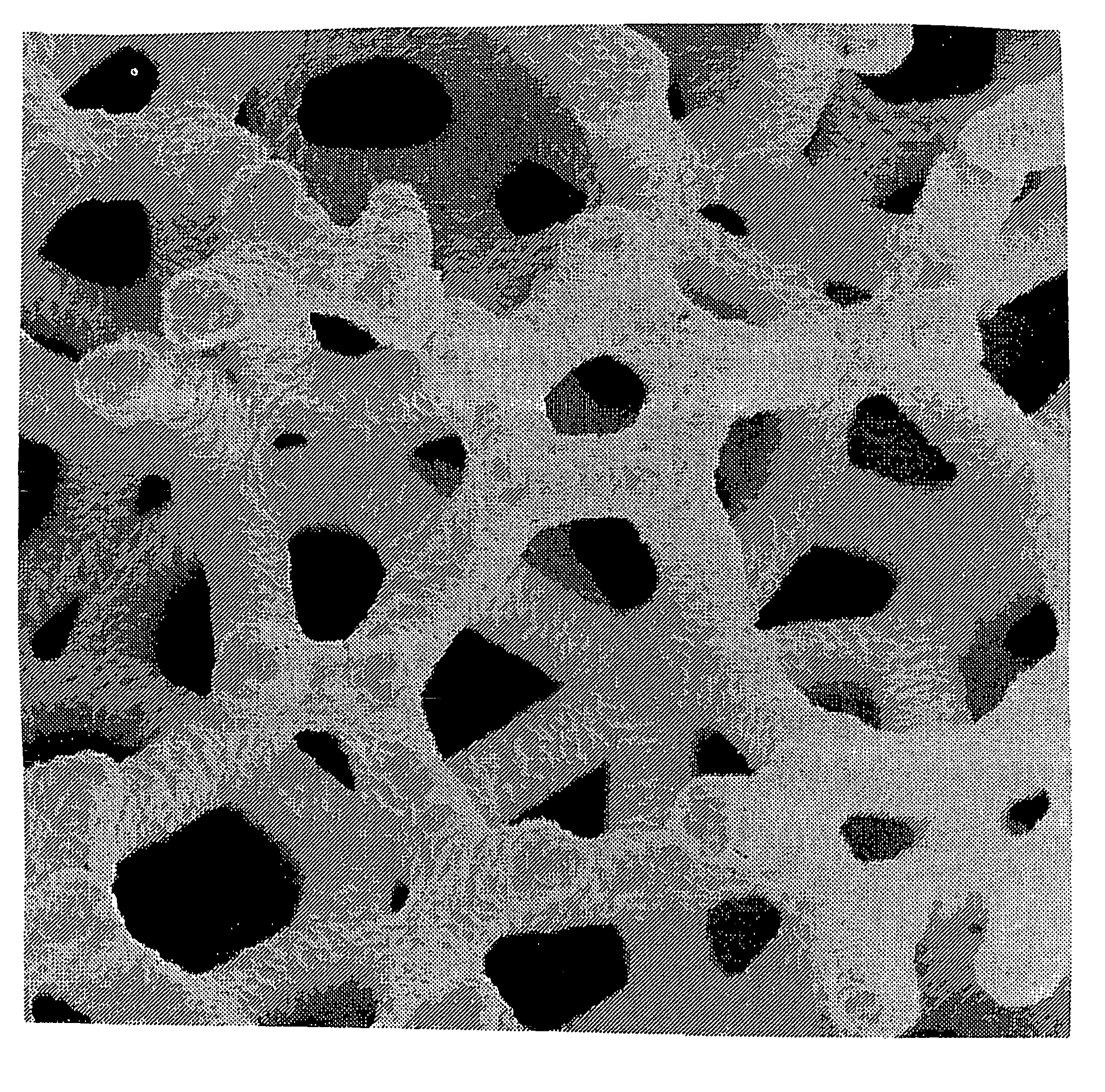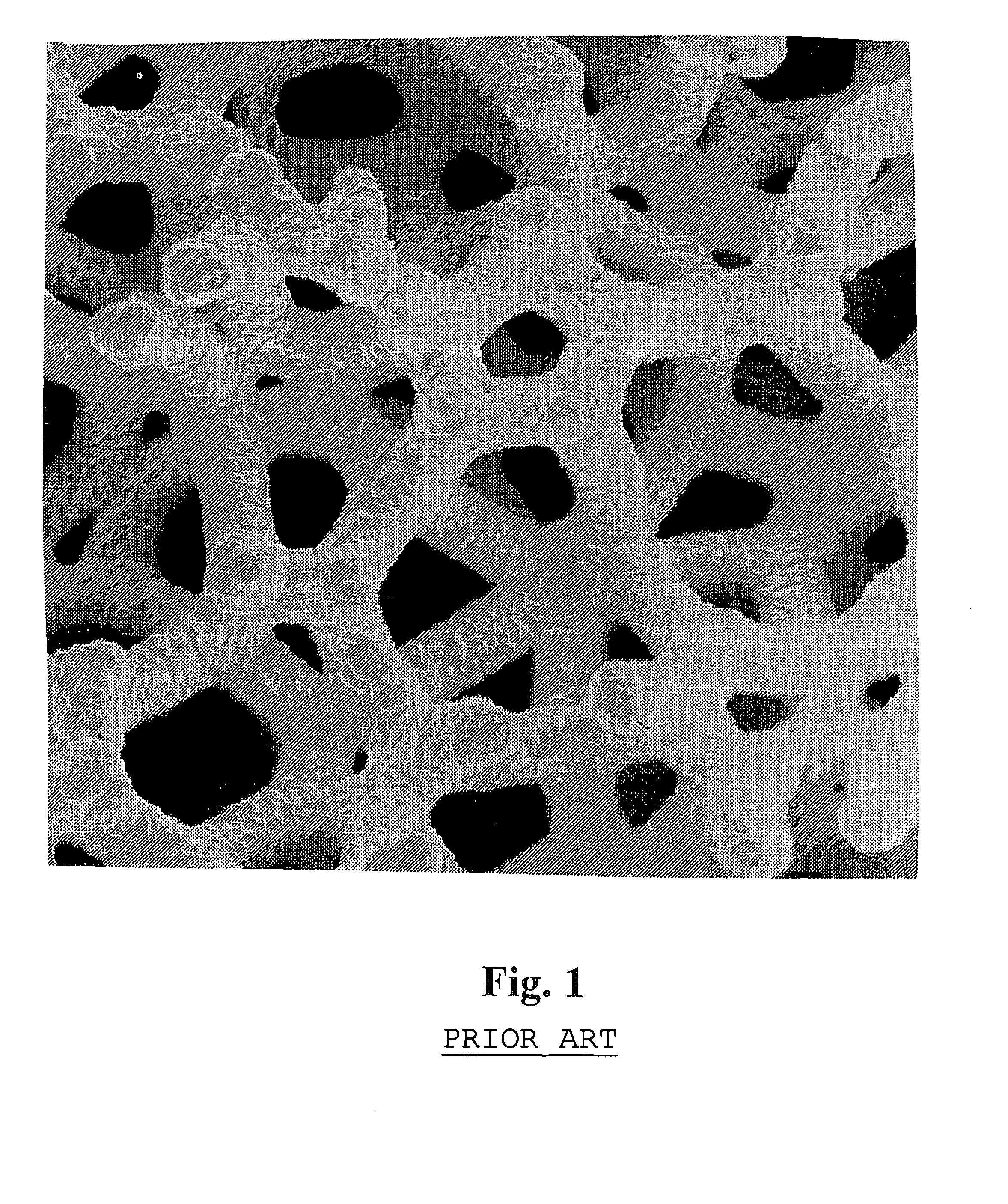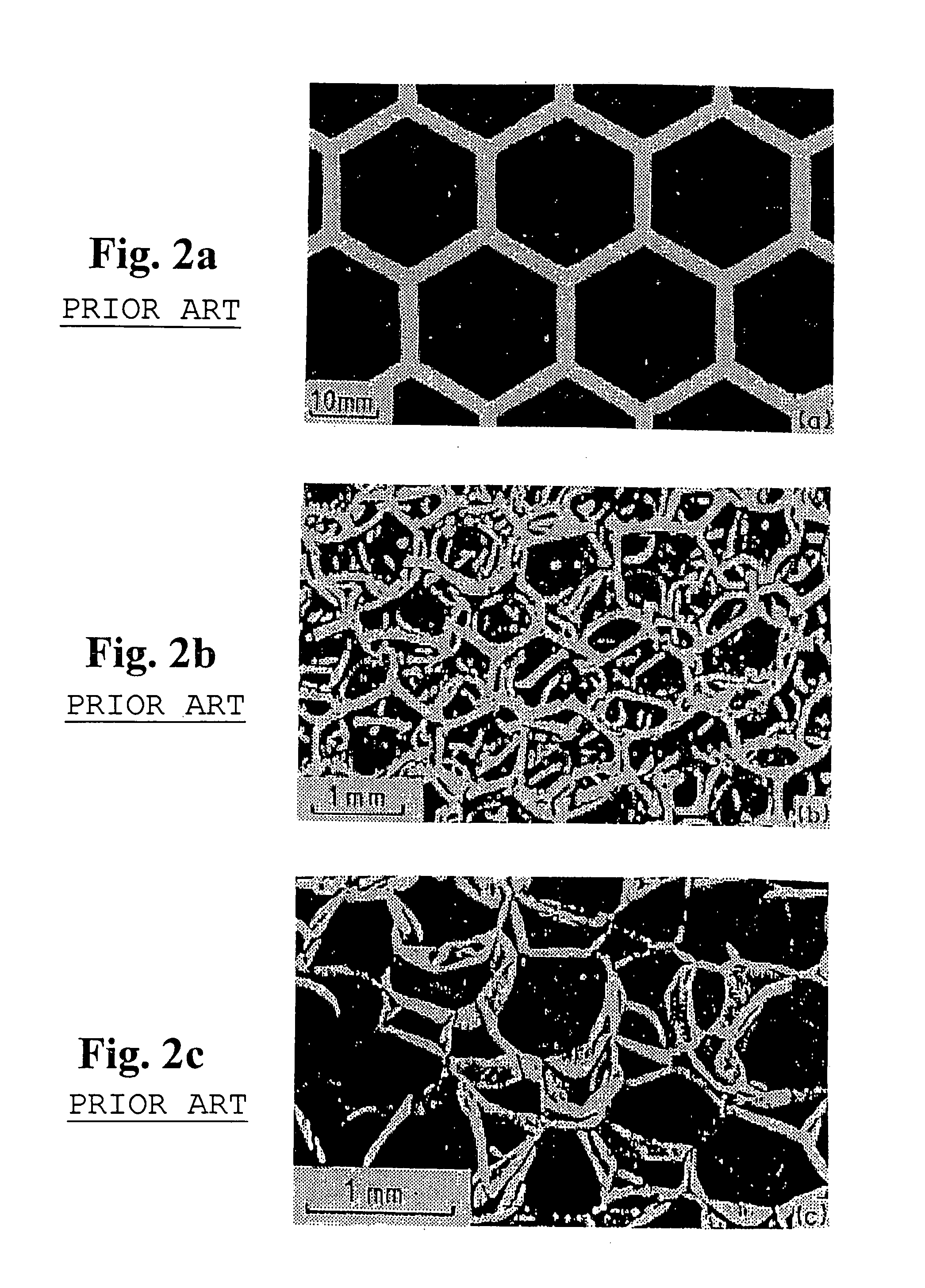Composite foam structures
a foam structure and composite technology, applied in the field of composite rigid foam structure fabrication, can solve the problems of difficult skinning of foam with pore densities less than 20 to 30 ppi, and the inability to completely seal the surface, so as to eliminate the need for complex and costly machining, increase the weight of skinned foam, and improve the effect of skinning
- Summary
- Abstract
- Description
- Claims
- Application Information
AI Technical Summary
Benefits of technology
Problems solved by technology
Method used
Image
Examples
Embodiment Construction
[0028]In a preferred embodiment of the invention, which has been selected for purposes of illustration only and not limitation, a regeneratively cooled, liquid propellant rocket engine was fabricated. The porous material was used as a heat exchanger to cool the inner wall of the rocket. This structure consisted of an inner wall of rhenium, encased in a rhenium-carbon open-cell foam heat exchanger, which is skinned with an Inconel alloy shell by a thermal spray processing. The inner rhenium shell and the outer Inconel shell were leak free and capable of containing flowing hydrogen at 500 to 1000 pounds per square inch (psi). In the manufacture of this embodiment, a molybdenum mandrel was fabricated whose outer surface replicated the desired inner geometry of the rocket. The outer surface of the mandrel was then coated with rhenium by chemical vapor deposition procedures (CVD) to a thickness of 1.5–2.5 mm. A block of open-pore, vitreous carbon foam (20 mm×20 mm×30 mm) was then pressed...
PUM
| Property | Measurement | Unit |
|---|---|---|
| thicknesses | aaaaa | aaaaa |
| thicknesses | aaaaa | aaaaa |
| size | aaaaa | aaaaa |
Abstract
Description
Claims
Application Information
 Login to View More
Login to View More - R&D
- Intellectual Property
- Life Sciences
- Materials
- Tech Scout
- Unparalleled Data Quality
- Higher Quality Content
- 60% Fewer Hallucinations
Browse by: Latest US Patents, China's latest patents, Technical Efficacy Thesaurus, Application Domain, Technology Topic, Popular Technical Reports.
© 2025 PatSnap. All rights reserved.Legal|Privacy policy|Modern Slavery Act Transparency Statement|Sitemap|About US| Contact US: help@patsnap.com



